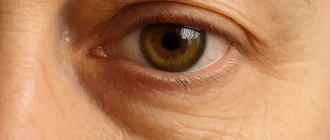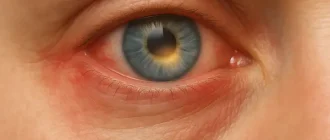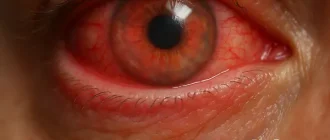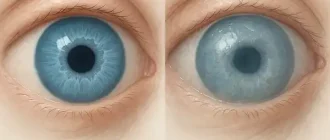Age-related Macular Degeneration is a crucial eye condition that largely remains unnoticed until the eyesight becomes noticeably poor. As one of the leading causes of vision loss, it brings about a significant decline in central vision, something we utilize for reading, driving, and recognizing faces or colors.
What is Macular Degeneration?
Often known as Age-related Macular Degeneration (AMD), it’s a medical condition predominantly impacting individuals over 60. The disease causes damage to the macula, a small tissue spot at the center of retina responsible for central vision. Central vision plays a major role in visual tasks demanding detailed work.
There are two forms of AMD – Dry and Wet. Dry AMD is most common and leads to the gradual breakage of the macula, resulting in blurred or reduced central vision. Wet AMD, though less common, is more severe and can cause significant vision loss quickly.
Causes and Risk Factors

Despite extensive research, the precise cause of Macular Degeneration is yet to be discovered. However, scientists have identified an array of risk factors. These encompass age, genetics, race, and smoking. Age being the main risk factor, the chances of developing Macular Degeneration increase notably after age 60.
Genetics also contribute immensely, as the disease tends to run in families. Smoking, on the other hand, acts as an accelerant, doubling the risks of AMD. Occasionally, the disease is also more prevalent among Caucasians compared to African-Americans or Hispanics. Knowledge of these risk factors plays an instrumental role in early detection and treatment.
Types of Macular Degeneration
Macular degeneration is a medical condition that impacts the center of the retina, known as the macula, often leading to vision loss. It is primarily seen in older people, hence it’s also referred to as age-related macular degeneration (AMD). It is of two types: the dry type and the wet type.
Dry Macular Degeneration
Dry Macular Degeneration is the initial phase and the most common type of this disease, accounting for about 80-90% of AMD cases. It is characterized by the thinning of the macula, often due to aging. People with this type of macular degeneration often experience blurred or reduced central vision, which might cause difficulty in performing everyday tasks such as reading and recognising faces.
It’s worth noting that dry AMD progresses slowly and usually leads to mild vision loss. However, it can progress to the more severe wet macular degeneration over time.
Wet Macular Degeneration
Wet Macular Degeneration is the advanced stage of this disease and is not as common as its dry counterpart. However, it can lead to more serious vision loss. It occurs when abnormal blood vessels start growing under the retina and macula. These vessels leak blood and fluid into the eye, causing scarring of the macula and rapidly leading to the loss of central vision.
While there are treatments available to slow the progression of wet AMD, it is crucial to detect the symptoms early to minimize vision loss. Regular eye check-ups are therefore necessary, especially for older adults.
Symptoms and Diagnosis
Macular degeneration, an unforgiving eye disorder, primarily impacts central vision by damaging the macula — a crucially small, yet significant portion of the retina. Distinguishing the symptoms and facilitating accurate diagnosis is essential to potentially forestalling its progression.
Common Symptoms of Macular Degeneration
Individuals with macular degeneration often experience blurred or reduced central vision, making it incredibly challenging to sharply observe details and perform basic tasks including reading, driving, and recognizing faces.
Another common sign is distorted vision, where straight lines seem to appear wavy or curved. Individuals might also encounter troubles adapting to low light conditions, encounter a decreased brightness in colors, or even have a blind spot in their central vision. The symptoms might progressively manifest in one or both eyes.
Diagnosing Macular Degeneration
Macular degeneration is typically diagnosed through a comprehensive eye exam. The tests can range from a visual acuity test assessing how well you see at different distances, to a dilated eye exam where specialists observe your retina and optic nerve for signs of AMD (Age-related Macular Degeneration).
A specific test known as angiography helps in detecting and tracking leaking blood vessels in the retina. An Amsler grid test could also be administered to identify distortions in your central visual field. Early diagnosis is vital in delaying vision loss, urging the importance of regular eye-check-up, especially for those aged 60 and above.
Treatment Options
Macular Degeneration, an age-related eye disorder, primarily deteriorates central vision. While no cure exists, several treatments can help slow progression or manage symptoms.
Medical Treatments
- Anti-VEGF Treatments: These are drugs injected into the eye. They block a protein called vascular endothelial growth factor (VEGF), slowing leaky blood vessel growth in the retina. This therapy can help maintain vision, but its benefits may diminish over time.
- Vitamin Therapy: A regimen of vitamins C, E, copper, zinc, and beta-carotene, as per the Age-Related Eye Disease Study (AREDS), can slow the progression of AMD in individuals with intermediate to advanced dry AMD.
Surgical Interventions
- Laser Photocoagulation: This procedure uses high-energy laser light to destroy the abnormal blood vessels under the retina causing the leakage and bleeding.
- Photodynamic Therapy: This procedure uses light-activated drugs to destroy abnormal blood vessels.
Assistive Devices and Rehabilitation
- Visual Aids: Devices such as magnifying glasses, video magnifiers, computer screen readers, and special eyewear can help maximize existing vision.
- Rehabilitation Services: Occupational therapists can provide training on low-vision skills and adaptive techniques, allowing patients to maintain independence and quality of life.
Remember, regular eye exams are crucial to catching and treating age-related macular degeneration early. Keep informed about latest treatment options, take proactive steps to protect your vision, and maintain a strong therapeutic alliance with your medical team to mitigate AMD’s consequences.
Living with Macular Degeneration
Living with Macular Degeneration requires adapting to new ways of doing daily activities. Simple modifications at home can make a huge difference. For instance, improving the lighting in your home and using high-contrast colors on important items can be beneficial.
- Regular Eye Check-Ups: This progressive disease necessitates regular eye check-ups. These appointments can help detect any changes in your vision early and adjust treatment plans accordingly.
- Healthy Lifestyle: Research has shown that a healthy lifestyle can slow down the progression of the disease. This includes balanced nutrition, regular exercise, and avoiding smoking.
- Visual Rehabilitation: Visual rehabilitation programs provide techniques to maximize the usage of your remaining vision, teaching you how to complete tasks with limited eyesight.
Living with Macular Degeneration doesn’t mean you have to give up on your favorite activities. It’s about finding new ways to do them. The journey might be difficult, but with the right support and coping strategies, it’s certainly manageable.





